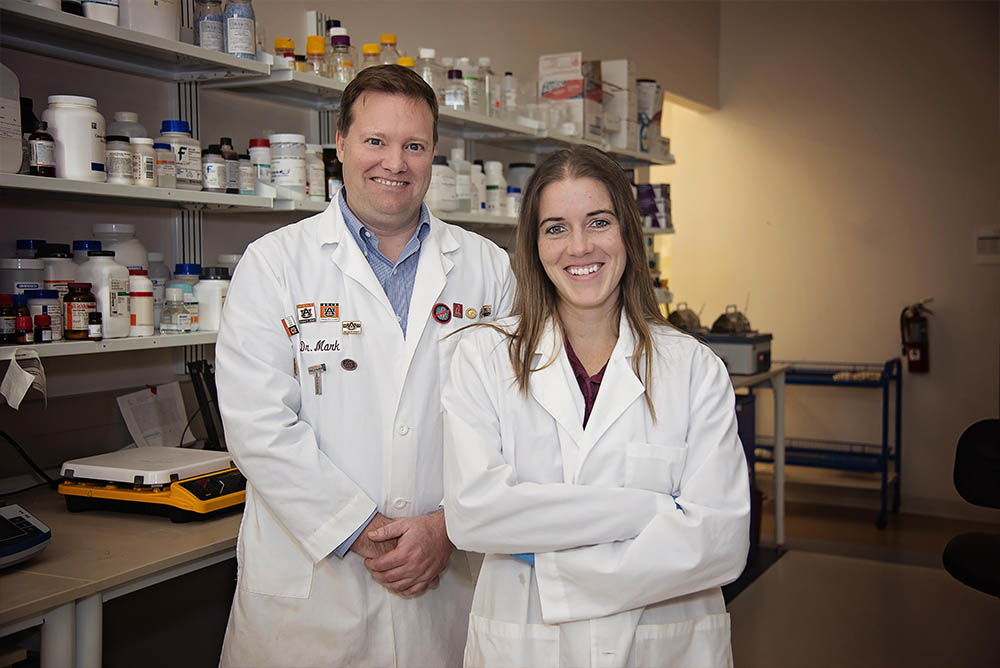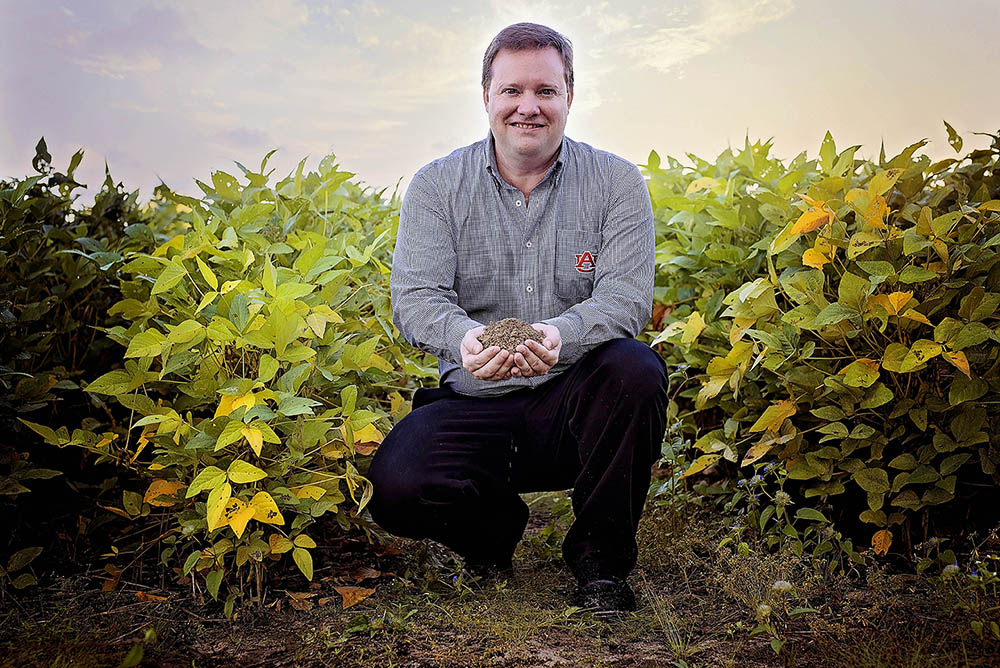Connecting students to jobs, companies to Auburn and research to real-world problems drove the rebranding of Auburn’s Research Park.
By Todd Deery ’90

DRIVING TOWARD AUBURN UNIVERSITY from I-85, you’ll see many of the usual fast-food restaurants and gas stations along College Street. But just south of campus, you’ve probably noticed a series of large buildings that dot an increasingly busy greenway inside Shug Jordan Parkway. It’s the Auburn Research Park.
The park recently rebranded, changing its name to simply “The Park at Auburn” in part to avoid market confusion with other Auburn entities like City of Auburn’s Technology Park. But the change also reflects a renewed plan to improve research and collaboration at the university, attract companies to Auburn, provide students meaningful internships, and nurture faculty and student startups.
Cary Chandler, senior director of the Auburn Research and Technology Foundation (ARTF, which operates The Park), said the rebranding was about better telling the park’s story. “This place is really a doorway for partnerships and opportunity, because this is where corporate America ought to be meeting with the bright minds evolving from the university, whether those minds are our faculty or students,” Chandler said. Started with a combined $15 million commitment from the state of Alabama and Auburn, the 170-acre research park broke ground on Nov. 17, 2005. Billed as the “front door” to the university, it has easy access to I-85 and is a key link to the evolving technology corridor stretching from Atlanta to Montgomery.
A new strategic plan created by Bill Dean, executive director of the ARTF, outlines the blueprint to fully integrate The Park into the campus and community. Dean, who has successfully run research parks in Huntsville and North Carolina, crafted a plan that stresses interaction and access to resources.
“The new ARTF Strategic Plan provides partnerships, teams and support services through touchpoints within a streamlined and proactive framework to take advantage of research strengths that are totally unique to Auburn University,” said Dean. He noted that the bold plan is built on interdisciplinary team building, commercialization and
entrepreneurship among people and business who desire
“We’re kind of driven to make a difference in the world. And with the support that’s here, you can do that.”
Recent buildings reflect this integration with the main campus and the community. The Research And Innovation Center (RAIC) opened in 2020 and features the New Venture Accelerator, an event center and Amsterdam Café among its amenities. There’s childcare available at the Big Blue Marble Academy, and the under-construction East Alabama Medical Center Health Sciences Facility will feature not only clinical research internships but an emergency room and ambulatory center that will be open to the public. Employees of all businesses in the research park get access to university amenities like the Recreation Center, Tiger Transit and the library.
Jim Weyhenmeyer, vice president for research and economic development, said the timing couldn’t be better, as the 2018 elevation of Auburn as an R1 research university by the Carnegie Classification of Institutions has “changed the conversation about Auburn.”
“The Park is quickly becoming a whole ecosystem of innovation, collaboration and business development,” he said. Weyhenmeyer believes The Park can provide meaningful internships for students, as well as a pipeline of tested talent for companies that move here.
“You’ll see more companies moving to this area, because it’s about access,” Weyhenmeyer said.
He also believes The Park will stand out for its investment in early-stage business development.
One of the best examples of this is the New Venture Accelerator—roughly 7,000 square feet of office space within the RAIC staffed with a team of resident experts—which guides startups on how to create business models and pitch to investors. The space is jointly managed by the Harbert College of Business and the ARTF and features 10 current startups, including SwiftSku, which in January finished third in the Amazon Web Services U.S. University Startup Competition.
SwiftSku’s achievement comes just after fellow New Venture Accelerator tenant Zac Young’s first-place finish at the SEC Student Pitch Competition in October 2020. Young, a senior in mechanical engineering and founder of Vulcan Line Tools, created the Wave Timer—a device that measures the sag, tension and temperature of power lines.
Chandler and Weyhenmeyer said that The Park can also be a force for helping to recruit star students and faculty who are looking for a university with a culture of innovation. Faculty like Mark Liles. For Liles, The Park is perfectly set up for the whole lifecycle of research, from discovery to taking a product to market. Liles is a microbiologist who has been trying to solve the problem of a deadly pathogen that has decimated farm-raised catfish in states like Alabama and Mississippi.
The Park provides Liles much-needed office and lab space. More importantly, it offers him the expertise to help turn his research into products that solve real-world problems. Mentors like the staff in the Office of Innovation Advancement & Commercialization helped him navigate the byzantine world of patents, copyrights, licenses and other programs. Liles works with faculty in other disciplines like pharmacy, crop sciences and fisheries, and says this interdisciplinary mindset is baked into The Park.
“It’s been a transformative experience,” Liles said. “Even though we might be in different departments and colleges, a lot of faculty here do very applied research. We’re kind of driven to make a difference in the world. And with the support that’s here, you can do that.”
Talk to anyone associated with The Park and they stress one thing: it’s not about the buildings, but the people. Dean’s slogan of “Connecting great minds” resonates with everyone.
Chandler said The Park’s updated mission is simple. “Everyone we’re talking to—student, faculty or company— we’re asking them the same thing: How can we help you develop the next generation of great?”

An Eye for Action
From the mound to the mountain, Blake Gordon ’03 has captured life on the edge.
Charting Her Course
From Auburn’s campus to the world’s most advanced warships, Emily Curran ’10 has never forgotten where she found her footing.
Building a Brand, Cultivating a Community
A fashion emergency and a social media surge helped Kayla Jones ’18 launch her brand Women With Ballz.
An Eye for Action
From the mound to the mountain, Blake Gordon ’03 has captured life on the edge.
Charting Her Course
From Auburn’s campus to the world’s most advanced warships, Emily Curran ’10 has never forgotten where she found her footing.
Building a Brand, Cultivating a Community
A fashion emergency and a social media surge helped Kayla Jones ’18 launch her brand Women With Ballz.


